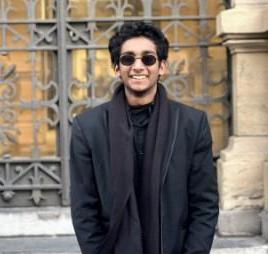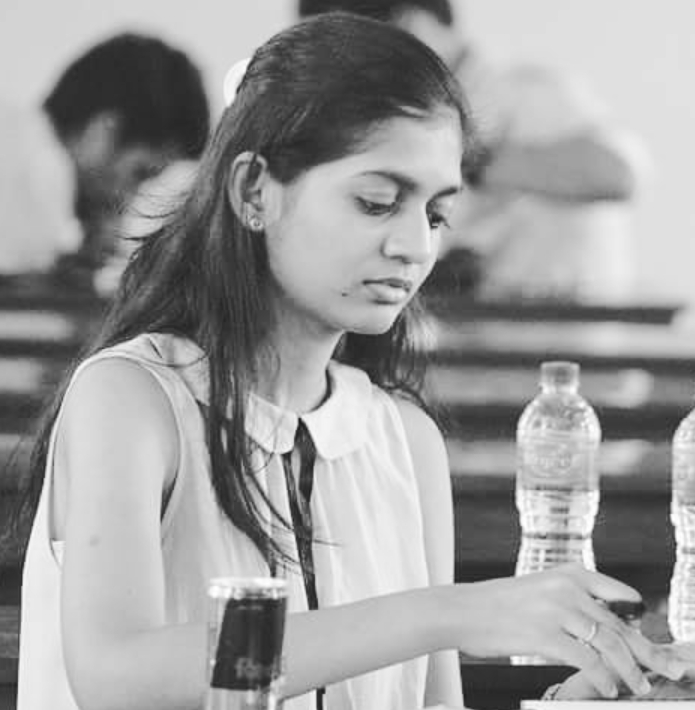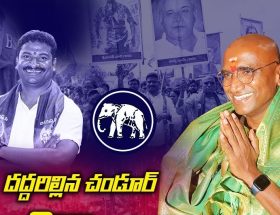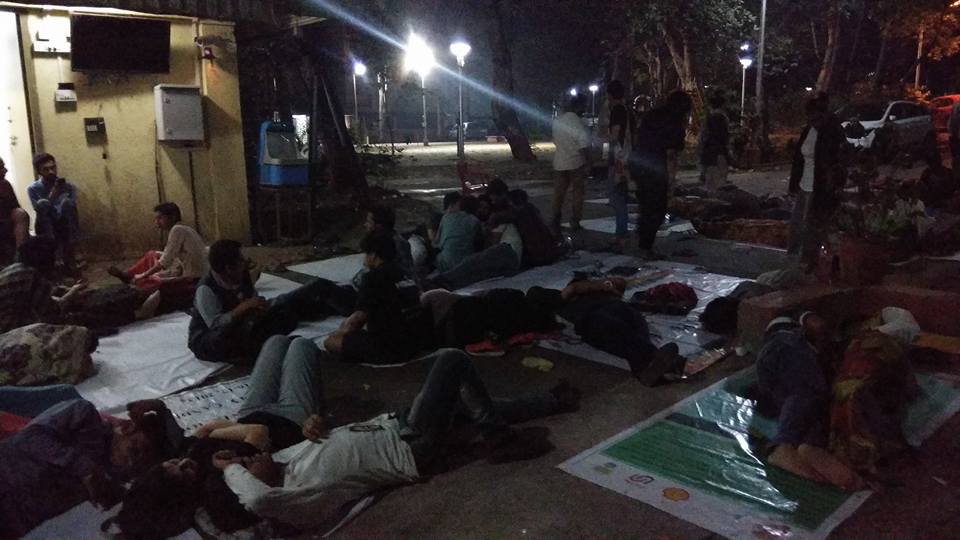Ablaz Mohammed Schemnad
My Socio-political observations as the elected vice-chairperson of TISS Hyderabad Students’ Council 2022-23
One thing I realised as an active member of the Ambedkarite student movement for the last two years during my study at TISS and interacting with fellow panthers from other universities is that there won’t be any other ideology that has such a broad interpretative scope as Ambedkarism has. Its focus area and functioning change drastically according to the leadership and coordination from campus to campus. Somewhere, the focus is electoral success, whereas in others, it would be academic and professional welfare among the students. No matter what, Bahujan students at campuses with the presence of an organisation or a collective feel relatively safer in comparison to those who do not have one. The spaces on the campuses where greater public attention is captured fail to occupy Bahujans, mainly those from ‘humble’ backgrounds, with the fear of an inferiority complex derived from an underconfident communicative approach and visible aesthetics. Through student demonstrations and study circles conducted under the banner of such Bahujan collectives, the ‘mic gets passed’, and the usually dominant sections listen to them, not merely from a progressive standpoint but due to the quality of the gathering. Bahujans otherwise get confined to spaces to work on their human capital by being with themselves or those with whom they are comfortable (which will also be Bahujans with similar socio-cultural locations), like computer labs, libraries, etc. While that is so important, the opportunity to enhance their social capital by mingling with people from dissimilar socio-cultural and linguistic backgrounds is reduced, which is ultimately said to be the primary goal of university spaces.
As a keen observer of political relations in campus spaces across the country, and by getting an opportunity to represent the students’ council of one of the crucial campuses in the country, there were various nuanced realisations and observations I have come across within the student fraternity across ideological spectrums and within the more significant Bahujan interactions as well. I will try to cover some of them briefly in the coming sections.
Ambedkarites get elected in TISS (2022-23)
The first students’ union/council elections held after the COVID-19 closure of universities across the country were in 2022–23, when I joined TISS Hyderabad for my master’s degree. The year marked a remarkable electoral stride in Ambedkarite student politics. The year also witnessed multiple ‘firsts’ in the journey of the movement. I was fortunate enough to contest and win independently, albeit with an understanding of the pooling of votes. I was the vice-chairperson in the council alongside a Banjara (nomadic tribal community) chairperson, a Dalit general secretary, and an OBC treasurer as the fellow office bearers, all from a broader Ambedkarite political ideology. Like-minded Ambedkarites also occupied other positions. The equally miraculous victory was seen across the other three campuses of TISS as well as other central universities, such as the University of Hyderabad. Claiming such positions is essential not merely for the electoral pleasure from them but also due to the administrative exchanges and leadership qualities that can be extracted from them. The otherwise invisible reformers and eminent personalities such as the Phule couple, Periyar, Fathima Sheikh, and other reformers took the front seat during all the student-hosted festivals and activities. Each programme commemorated those who fought against the regressive societal practices and oppressive dominations of the self-proclaimed superiors. The interactions and pressure on the administration for social justice have become the priority in matters like student aid transfers and providing essential resources and assistance to those lacking them. We also made sure the elites on the campus were also given attention by conducting not-so-political celebrations and activities. Overall, the philosophy and conventional approaches to student representation changed by not being mere puppets of the administration and following orders.
Indian society boasts colourful features in its food, clothes, streets, religious sites, etc. But as a student and a researcher travelling across the country and observing around, the inherently unequal nature of our mainstreams confines everything to very few holdings. Property relations, commercial interactions, occupational trends, and institutions have a ‘legacy’ carried forward by the dominant oppressive sections. Campus spaces are a microcosm of all of it. Albeit subtly, the relations function correspondingly with the ‘outside’ society. The social locations of students are identifiable by their appearance, way of communication, hangout circles, and even their vocabulary. These indicators are unfortunately utilised to sideline such ‘warriors’ representing their whole community in such elite and exclusionary spaces. Thus, for students from historically marginalised and disadvantaged communities, it is essential to be in power and represent the student body.
When someone from these ‘marginalised’ communities possesses a material good or anything that symbolises economic progress as per the societal standards in which we live, the already wealthy and material-possessing classes start to feel inferior and question the ‘legitimacy’ of the genuine social interest in the movement, which represents the ‘poor people’ of the country. For instance, when a person from a Dalit community, active in the Ambedkarite political sphere, starts to use an iPhone or wear ‘branded’ clothes, the ‘antagonists’ in this context will question the disconnect of that person from the community he or she represents. As per these ‘pundits’, it is not in their historical right to use any article or material goods that those ‘pundits’ and their ancestors have kept with themselves for years, denying access to those from the so-called historically disadvantaged communities. This evil thought is not a novel happening; even Dr. B.R. Ambedkar was questioned for his western-looking three-piece suit, which the Savarnas of that time had a monopoly upon.
Anti-ideology disguised as politically-motivated groups
Talking about the subsequent elections at TISS Hyderabad, the highly intoxicant ‘apolitical’ neutral well-wishers and ‘anti-identity politics’ gurus came up with a strategy to fight the defending narrative, that is, the Bahujan-led ideologically powerful Ambedkarism, which constituted all the oppressed identities such as the ‘Untouchables’, Adivasis, Muslims, Christians, among others. It was disheartening to see the right-wing closeted sanghis holding hands with the so-called followers of Karl Marx, with the collective aim of defeating the Ambedkarites. The otherwise dominant Left ‘progressive’ student group(s) was/were shamelessly denying the association, even though it was visible to anyone with some common political sense. In my opinion, it is about the exposure and understanding of the leadership in such organisations that causes unerasable shifts in the dynamics of political sentiments. Even though there would be a slight appraisal of their political aspirations, the scars of such irregularities can never be removed. In the previous election, such was the scenario on the Hyderabad campus of TISS—the fight between those against ideology and those with a clear-cut opinion and ideology.
Indian student politics are dominated by Left parties, which have dominated nominally with their presence for years. Even when the Indian Left struggles to find its position at the general elections and state legislative assemblies, student union elections have constantly elected Left-backed parties at the central universities. Such is the condition in India; mistakes (if at all a mistake) like the one committed at TISS Hyderabad in the previous election will also add to the deterioration among the student community.
The Bahujan Question
The title of the article was not merely clickbait to attract readers. Instead, it is a question that I have been asking myself throughout my journey in the highly emerging political movement driven by a robust justice-oriented ideology. As an OBC Muslim from Kerala, it was a completely new picture and landscape when I stepped into the sphere, where I was equally respected and welcomed. Like all the others, I am still finding my space inside this ever-evolving socio-political wave. As a Muslim, being a religious minority and a severely affected community in the country from social and educational perspectives, I feel the resistance and emancipatory strategies should be shoulder-to-shoulder with the similarly oppressed and ‘discarded’ marginalised sections and communities in the country. So, for me, it is a Bahujan question rather than just a Dalit, Tribal, or Muslim individual identity question.
~~~
Ablaz Mohammed Schemnad (Visual Storyteller), is a Charpak Exchange Scholar, Sciences Po Lille, France. He has an M.A. Development Studies, from Tata Institute of Social Sciences, Hyderabad.










